Fresh Milled Sourdough Dinner Rolls
Yes, this recipe has a long name. But I promise the steps to created these Fresh Milled Sourdough Dinner Rolls could not be more simple! When I first began making baked goods with freshly milled flour, I was really intimated. My well-loved recipes were dense, or flat, and I felt like I couldn’t get the hang of it. This sourdough dinner rolls recipe was one of the first recipes that was a consistent win time and time again. If you’re frustrated with how your fresh-milled flour recipes are turning out, I suggest starting with this one!
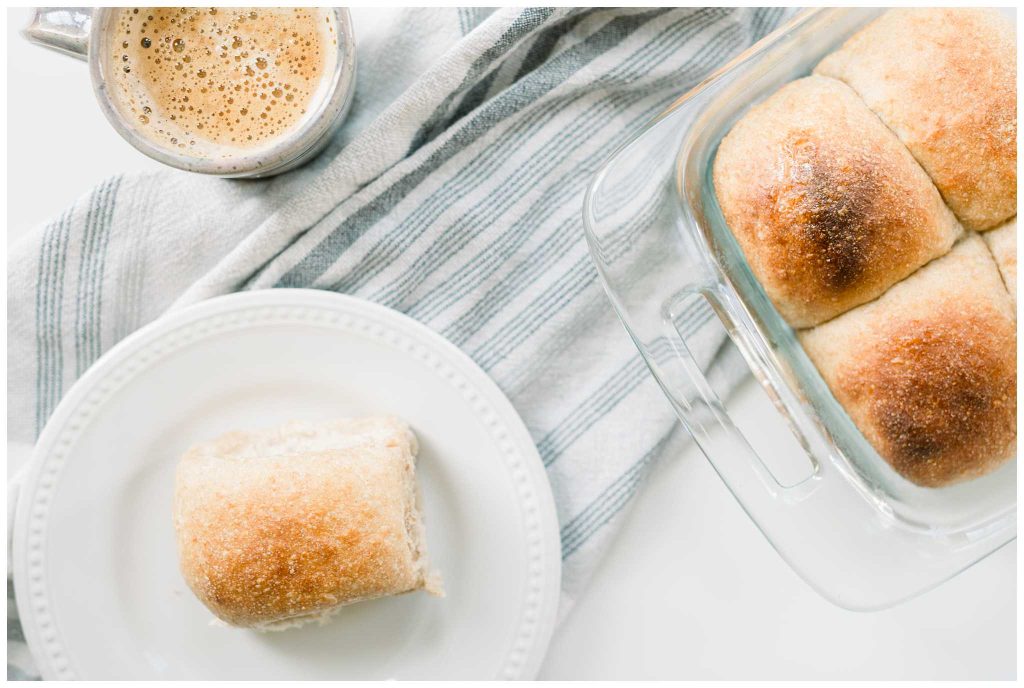
Some links on this site are affiliate links. If you buy something, I may earn a small commission (aka more ingredients for future recipes!)
Why You’ll Love This Recipe
Fluffy and Tender Fresh Milled Flour Dinner Rolls
There’s nothing better than pulling apart a soft, warm dinner roll, and these sourdough rolls deliver every time. Thanks to the careful balance of fresh-milled flour and sourdough leavening, these rolls are light, fluffy, and perfect for sopping up every bit of soup, stew, or gravy. Despite their wholesome ingredients, these rolls defy the stereotype of dense whole-grain baking.
Wholesome Fresh Milled Flour
Baking with fresh-milled flour doesn’t just boost the nutrition; it also adds incredible freshness and complexity to your baking. Each batch of rolls benefits from the unique character of freshly ground flour, making every bite a testament to simple, high-quality ingredients. Don’t have a grain mill yet? You will LOVE my sourdough dinner rolls recipe that uses the same techniques, but is adjusted to be used with all purpose flour.
Naturally Leavened With Sourdough
No commercial yeast here! These rolls are leavened with your trusty sourdough starter, giving them a complex flavor profile you won’t find in typical dinner rolls. Slightly tangy with a hint of natural sweetness from the grains, they’re a perfect accompaniment to dinner, as a slider sandwich, or alone as a snack.
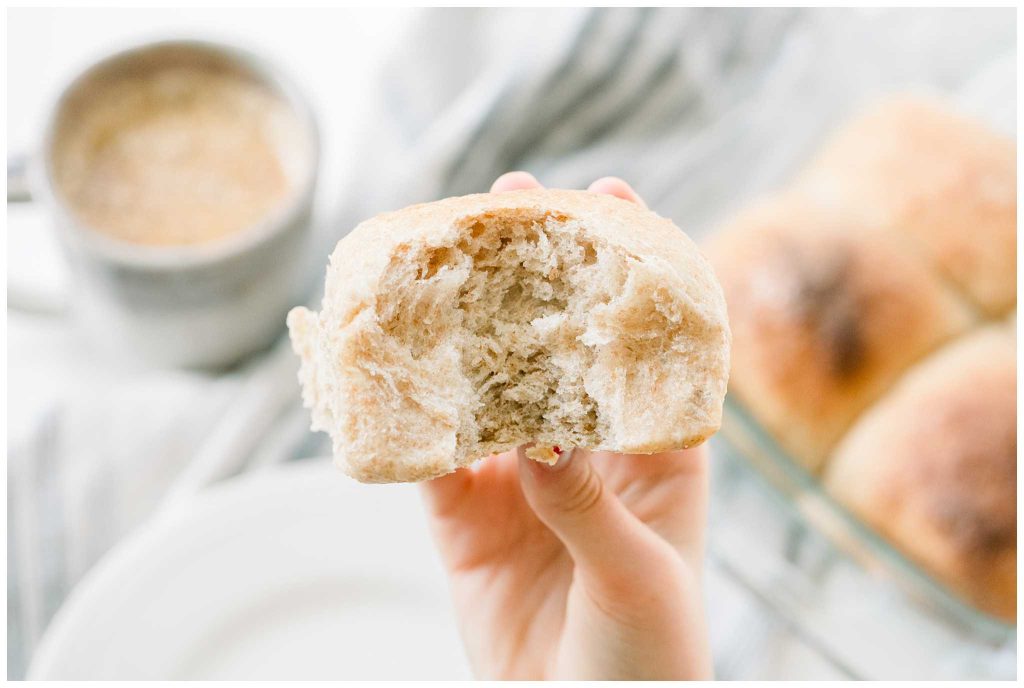
Ingredient List
Tangzhong (Milk and flour)
The tangzhong is made using a small amount of the flour and milk from the recipe. Cooking these together creates a paste that improves the softness and texture of the rolls while keeping them fresh longer. Read below for how this is incorporated in the recipe (it’s super simple, promise!)
Hydrated and Fed Sourdough Starter
Active and bubbly sourdough starter is the heart of this recipe. Make sure your starter is freshly fed and at its peak to give these rolls their signature tang and leavening
Freshly Milled Flour
For this recipe, I reccomend using either soft white wheat or hard white wheat berries. Best results are when you grind your flour and use it right away, but you can also grind it in advance and freeze it until your ready to use. This will preserve all the nutrients before oxidization takes place.
Sugar
Sugar adds just the right amount of sweetness to balance the tangy flavor of the sourdough and encourages golden browning during baking. Warm water is used to help hydrate the dough evenly and ensure the sourdough starter stays active. If you would like the sweeter Hawaiian rolls, check out my Sourdough Hawaiian Rolls Recipe.
Butter
Softened butter provides richness and creates a tender crumb, while sea salt enhances all the flavors, giving the rolls a perfect savory balance. Freshly milled flour, or store-bought whole wheat flour if you prefer, is the star ingredient, contributing hearty flavor and wholesome nutrition to these sourdough dinner rolls.
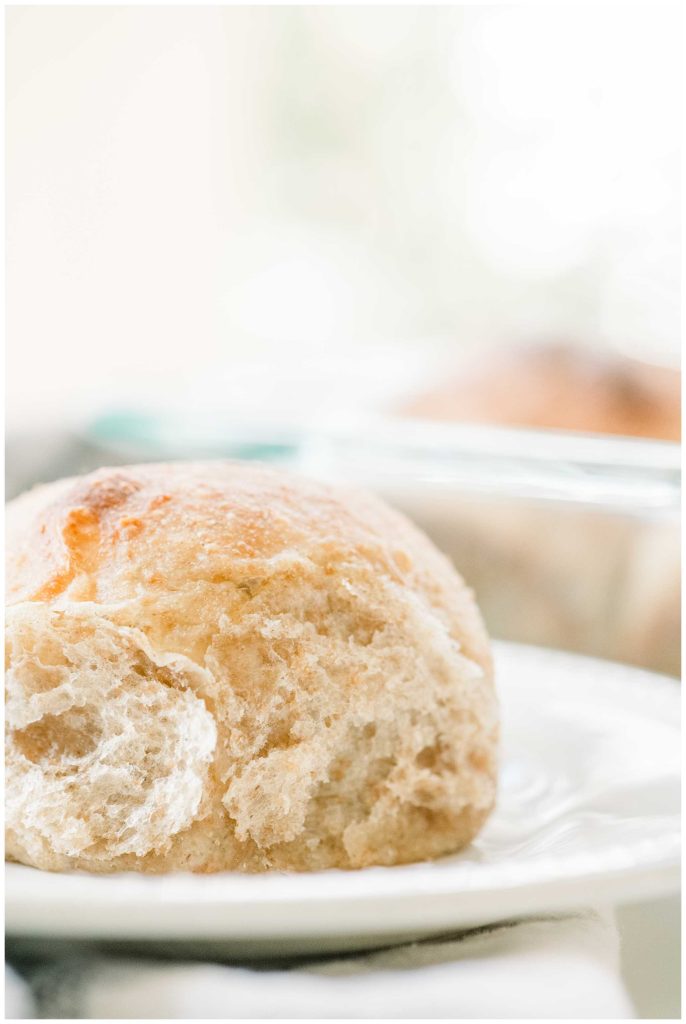
Tools and Equipment
Stand Mixer
I use my Kitchenaid mixer with all enriched bread recipes. It makes the job go from something that would wreck my hands and wrists, to a simple weekly task! If you don’t have a stand mixer, you will have to hand knead this recipe for 15-20 minutes.
Kitchen Scale
Kitchen scales take all the guesswork out of measuring ingredients. They are very cheap and incredibly reliable. I use my kitchen scale similar to this one at least twice a day.
9 x 9 Baking Dishes
This recipe makes 18 dinner rolls, so you will need either one 9 x 13 baking dish or two 9 x 9 baking dishes. I love using one that has a lid like this one because I don’t have to use a damp towel or plastic wrap when proofing. You could also half this recipe, but since these freeze so well I would rather have a larger batch for all the effort.
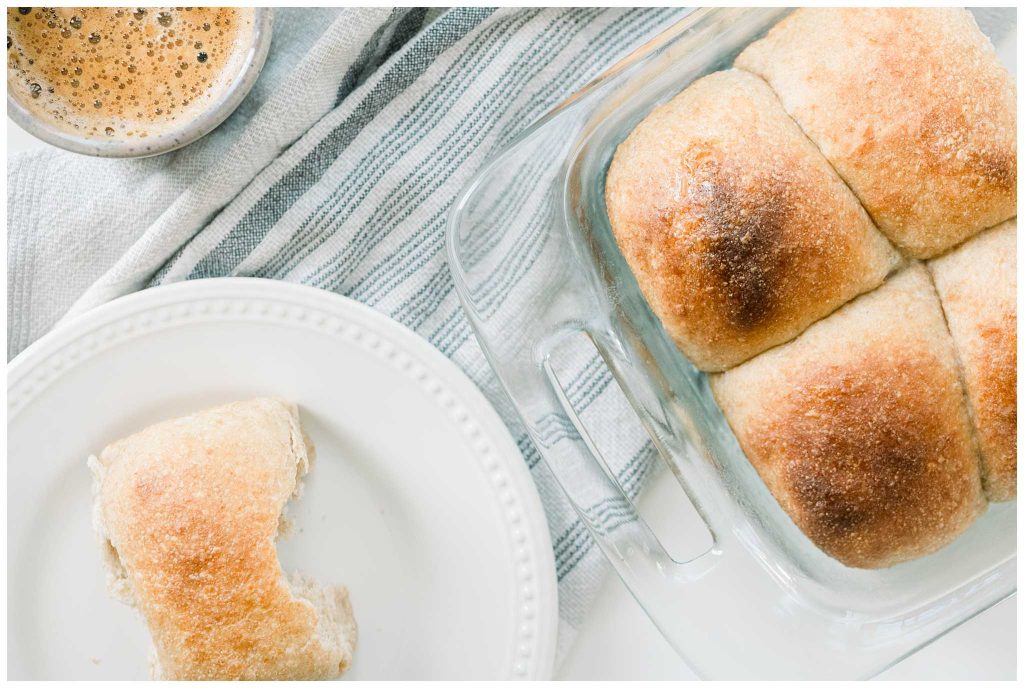
Bakers Schedule For Sourdough Dinner Rolls
Day 1: Mixing and Fermentation
- 8:00 AM: Feed sourdough starter so it’s active and bubbly (ready in 4–8 hours). Prepare tangzhong and let it cool.
- 12:00 PM: Begin mixing the dough with the tangzhong, starter, and other ingredients. Knead the dough for 10–15 minutes.
- 12:30 PM: Place dough in a greased bowl, cover, and let it bulk ferment until almost doubled, about 3 to 4 hours in the summer and 5-6 hours in the winter in my kitchen.
- Evening: Divide dough into 16 equal pieces and shape into rolls. Arrange shaped rolls in a greased dish, cover with plastic wrap, and place in the refrigerator to cold-proof overnight.
Day 2: Baking Day
- 8:00 AM: Remove rolls from the refrigerator and let them proof at room temperature for 5–6 hours, or until doubled in size and puffy. Cover with a damp towel or plastic wrap during proofing to prevent drying out.
- 2:00 PM: Preheat oven to 375°F (190°C).
- 2:15 PM: Brush the rolls with egg wash (optional) and bake for 25–30 minutes, or until golden brown.
- 2:45 PM: Remove rolls from oven and brush with melted butter for a soft and shiny finish. Allow to cool slightly, enjoy!
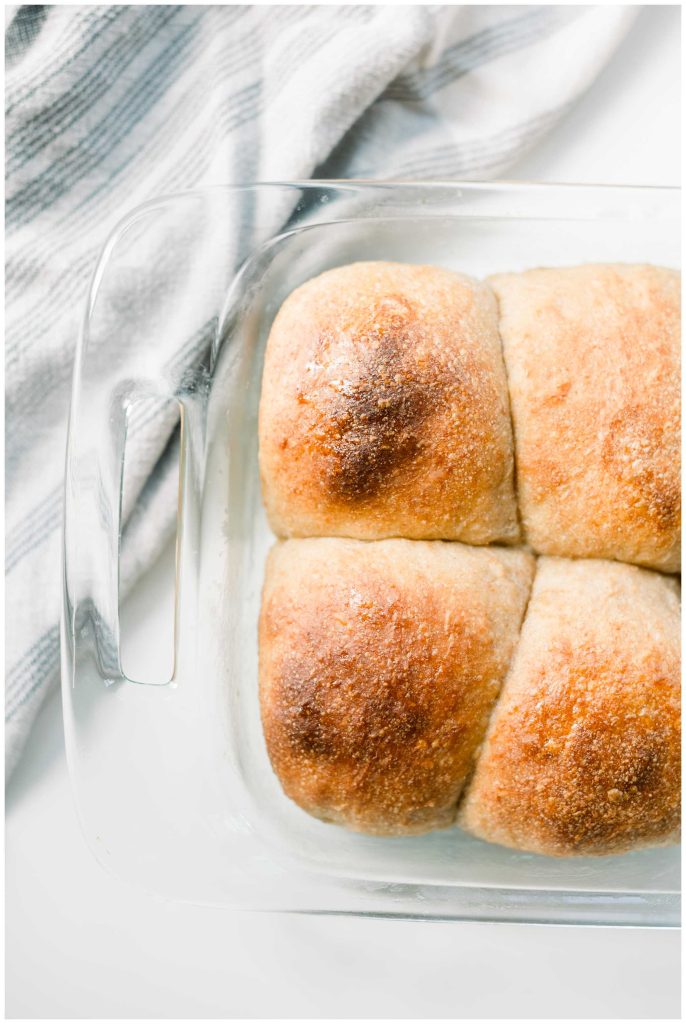
Tips and Tricks
Gauge your rising times
One of the unique things about baking with sourdough is learning how the wild yeast works in your kitchen. I would go as far as to say that you should throw all recipe rising times out the window when working with a sourdough recipe. This is because your kitchen, the season you’re in, the flour you’re using, and so many other things go into play when fermenting and proofing your dough. This sourdough dinner rolls recipe comes with the fermenting and proofing times that work in my kitchen. Make sure you are following the guides such as “when doubled” because THAT is what makes the difference in a successful sourdough recipe.
What is the Tangzhong?
The tangzhong method is a technique that involves cooking a portion of the flour and liquid (milk, in this case) into a thick paste before adding it to the dough. This simple step has been popularized in Asian baking for creating soft, pillowy bread that stays fresh longer.
By pre-gelatinizing the starches in the flour, tangzhong allows the dough to absorb more liquid. This extra hydration means the dough bakes into rolls that are softer, moister, and fluffier than traditional methods. Additionally, the tangzhong paste helps lock in moisture, which keeps these dinner rolls tender for days—perfect for leftovers (if there are any!).
For this recipe, the tangzhong technique complements the sourdough fermentation by enhancing the rolls’ structure and texture, making them light and airy rather than dense or dry. It’s a small step with big rewards!
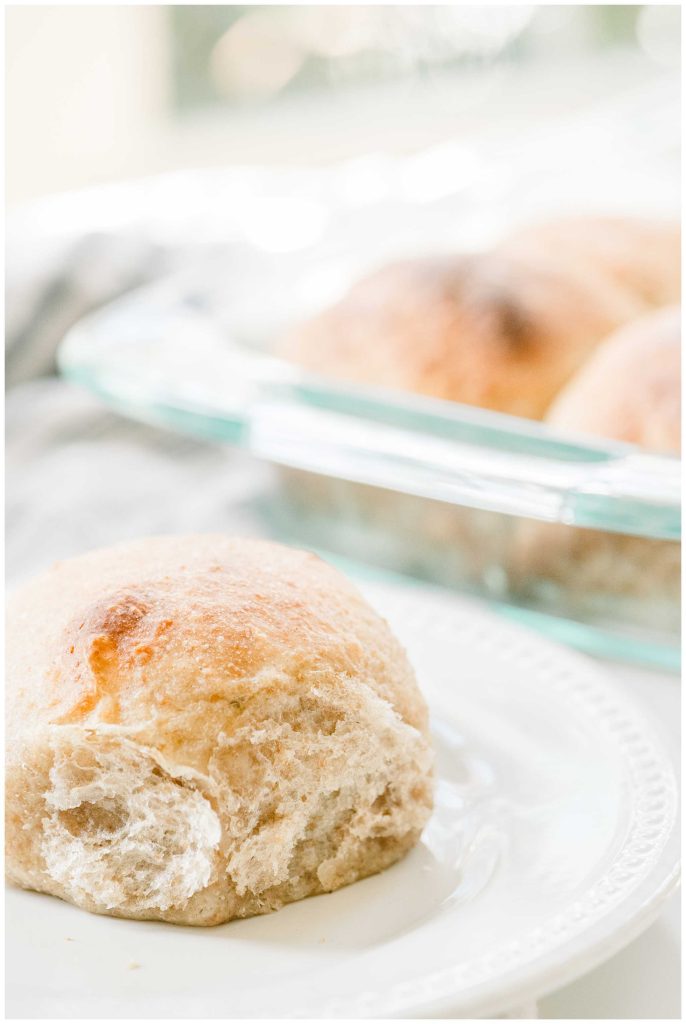
Sourdough Dinner Rolls Recipe
Freshly Milled Dinner Rolls
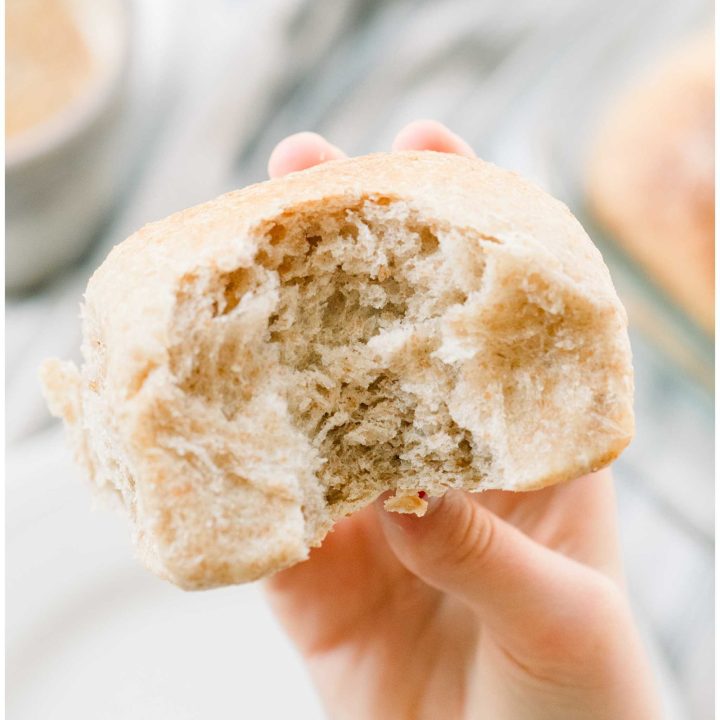
These soft and fluffy sourdough dinner rolls using fresh milled, whole wheat flour will be the centerpiece of your dinner.
Ingredients
Tangzhong
- 6 tablespoons (54 g) fresh ground flour
- 1 cup (240 g) milk
Ingredients
- 1 cup (226 g) sourdough starter, active and bubbly
- 1/2 cup (100 g) sugar
- 1 cup (240 g) warm water
- 1/2 cup (113 g) softened butter
- 1 teaspoon (4 g) sea salt
- 5-6 cups (600 - 720 g) fresh ground flour
Optional
- 1 egg, beaten (for egg wash)
- Melted butter, for brushing after baking
Instructions
- Feed Your Sourdough Starter: Feed your sourdough starter several hours before beginning (usually 4–8 hours, depending on your environment) to ensure it’s active and bubbly.
- Prepare the Tangzhong: In a small saucepan, combine 6 tablespoons of flour and 1 cup milk. Whisk continuously over medium heat until the mixture thickens and forms a paste (it should reach a pudding-like consistency). Remove from heat and let cool to room temperature.
- Mix the Dough: In the bowl of a stand mixer, combine the cooled tangzhong, sourdough starter, sugar, warm water, softened butter, remaining flour, and sea salt. Using the dough hook, knead on low speed (speed 2 for Kitchenaid mixers). Start with 6 cups of flour and add a little at a time until the dough comes together. Knead for 10–15 minutes, until the dough becomes smooth, stretchy, and can pass the windowpane test.
- Fermenting: Place the dough in a greased bowl, cover with a towel, and allow to rise overnight (8–12 hours). Rising time will vary depending on the temperature of your home; it may take longer in a cooler environment.
- Shape the Rolls: The next day, divide the dough into 18 equal parts. This will be about 90 grams each. Roll each piece into a smooth ball by creating surface tension. Use one of two methods: (1) rolling the dough balls against a countertop or (2) pressing your thumb into the center, folding and pinching the ends together, and repeating as needed.
- Proofing: Place the shaped rolls into two well-greased 9x9 dishes, cover with a damp towel, and let rise until doubled in size, about 2–4 hours.
- Bake the Rolls: Preheat your oven to 375°F (190°C). Brush the tops with an egg wash (optional) for a golden finish. Bake for 25–30 minutes, or until the rolls are golden brown.
- Serving: Brush the hot rolls with melted butter for an extra rich and shiny finish, if desired. Allow the rolls to cool slightly before serving. Enjoy warm or at room temperature!
Notes
What kind of wheat berries should I use?
I recommend using either hard white wheat berries or soft white wheat berries for these rolls. Baking with those wheat berries allows for a softer texture.
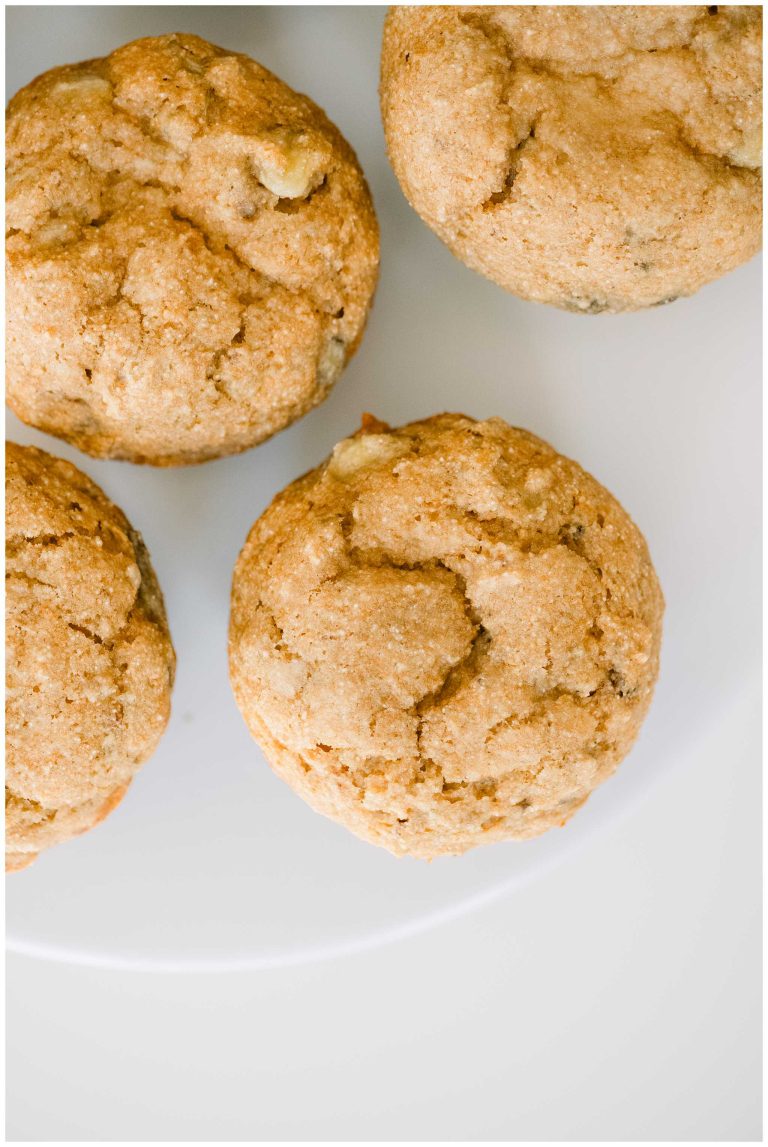
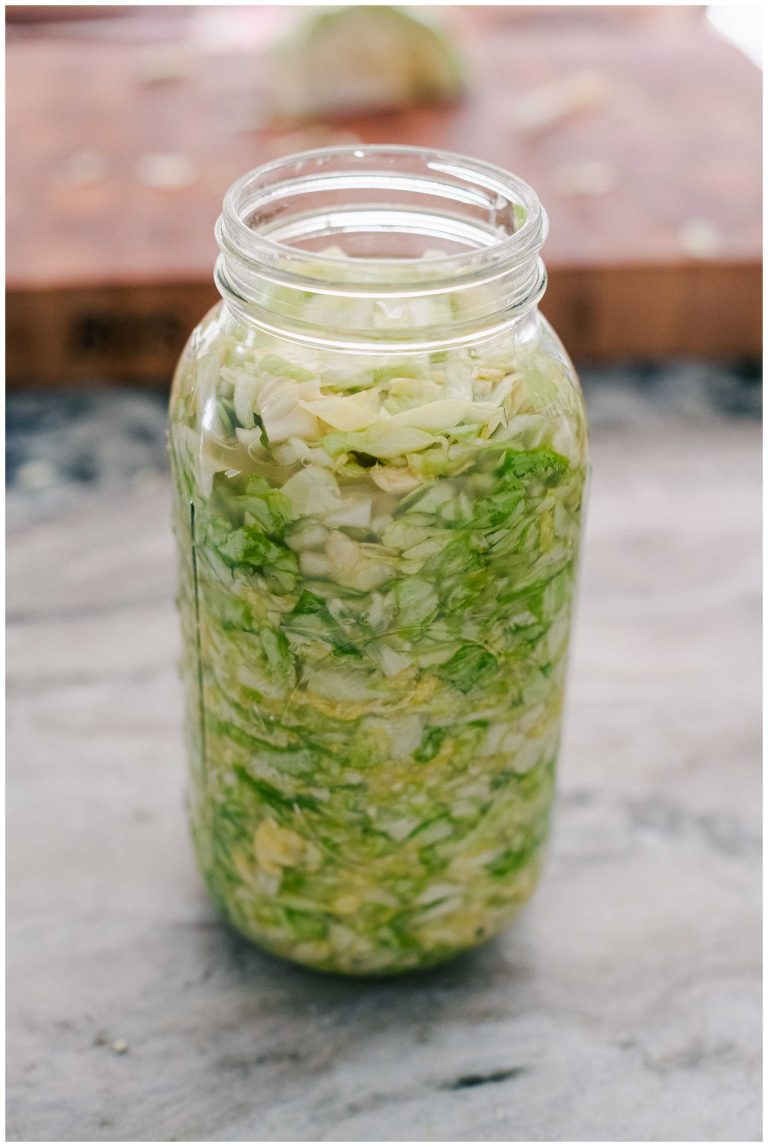
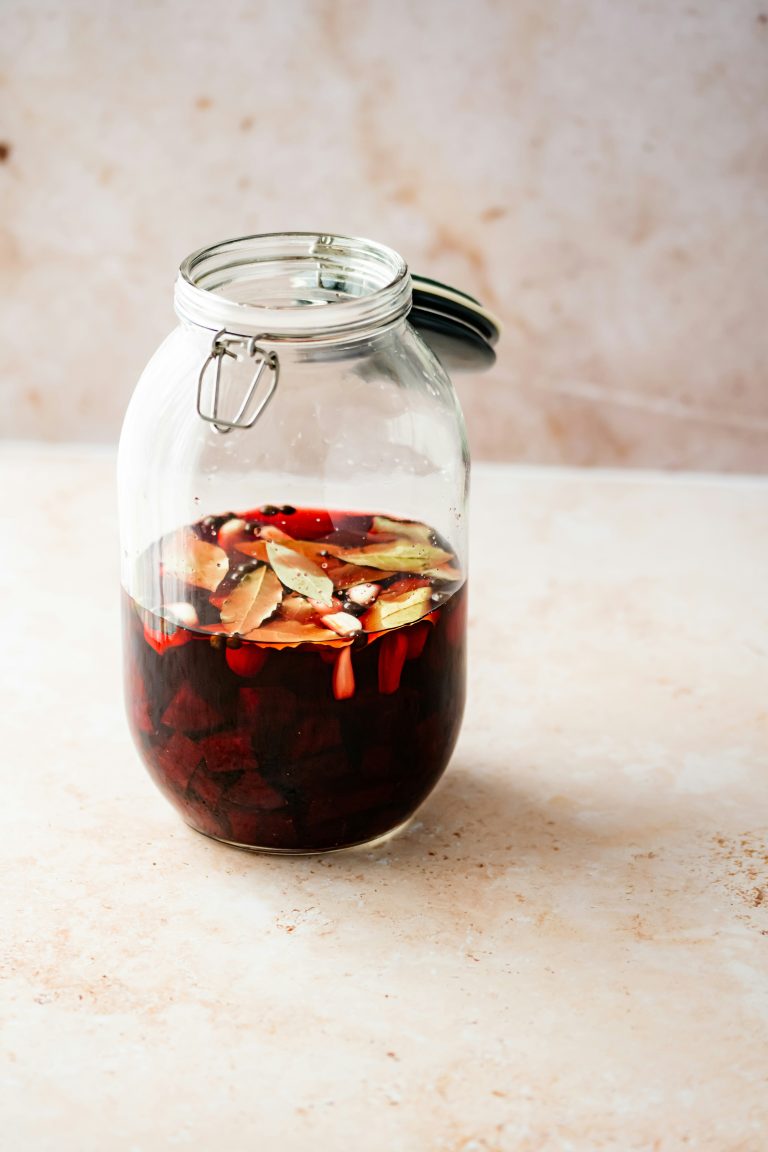
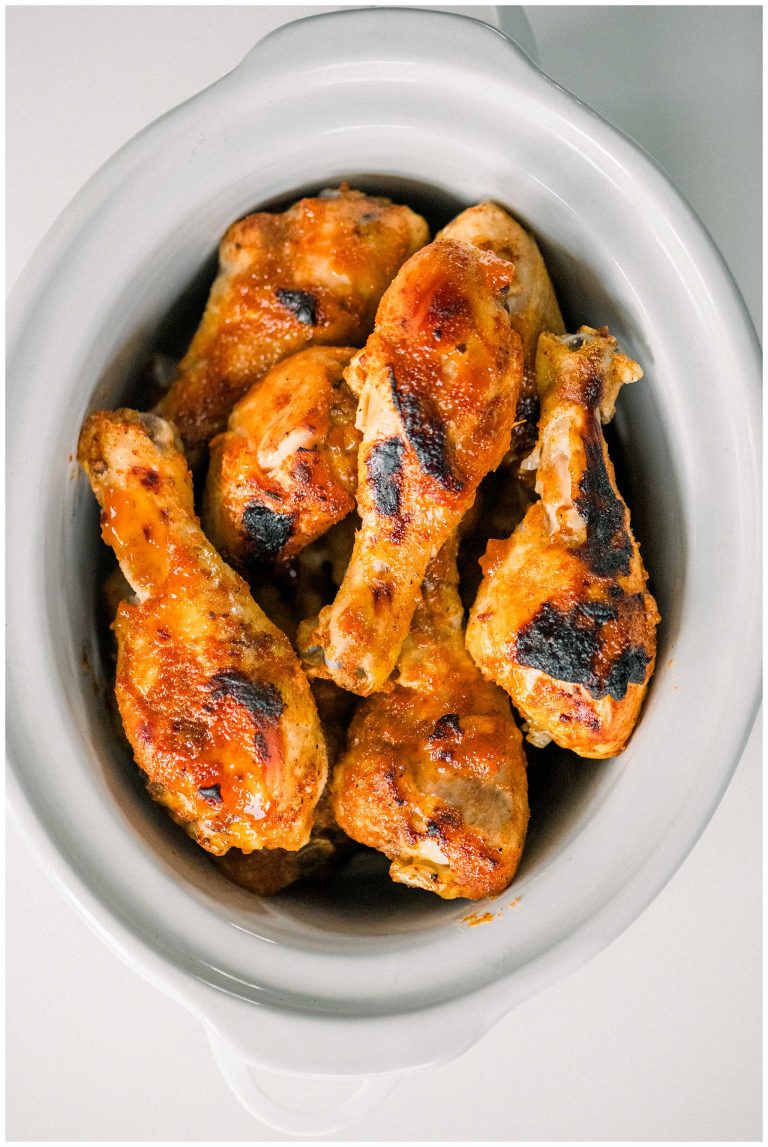
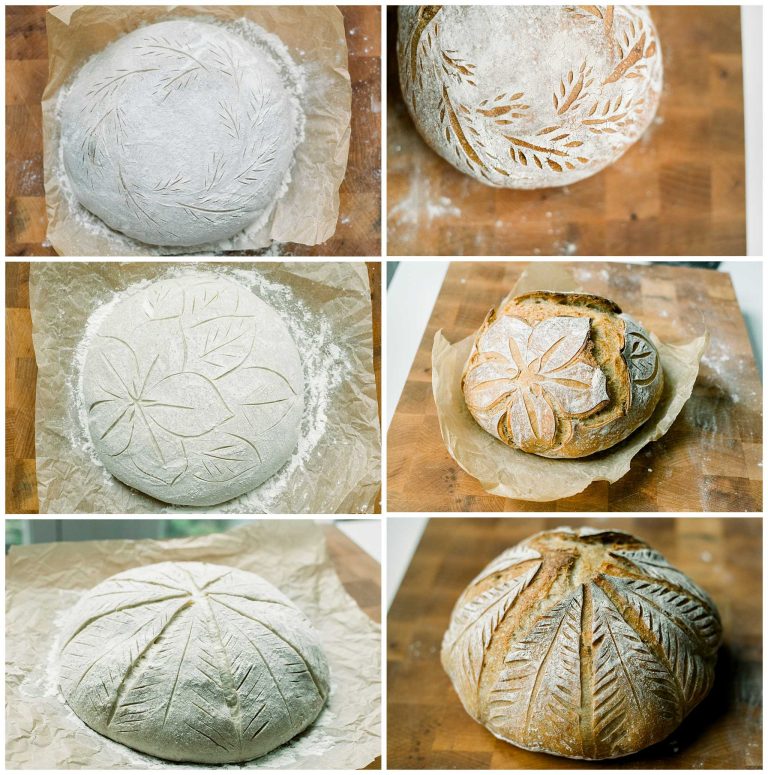
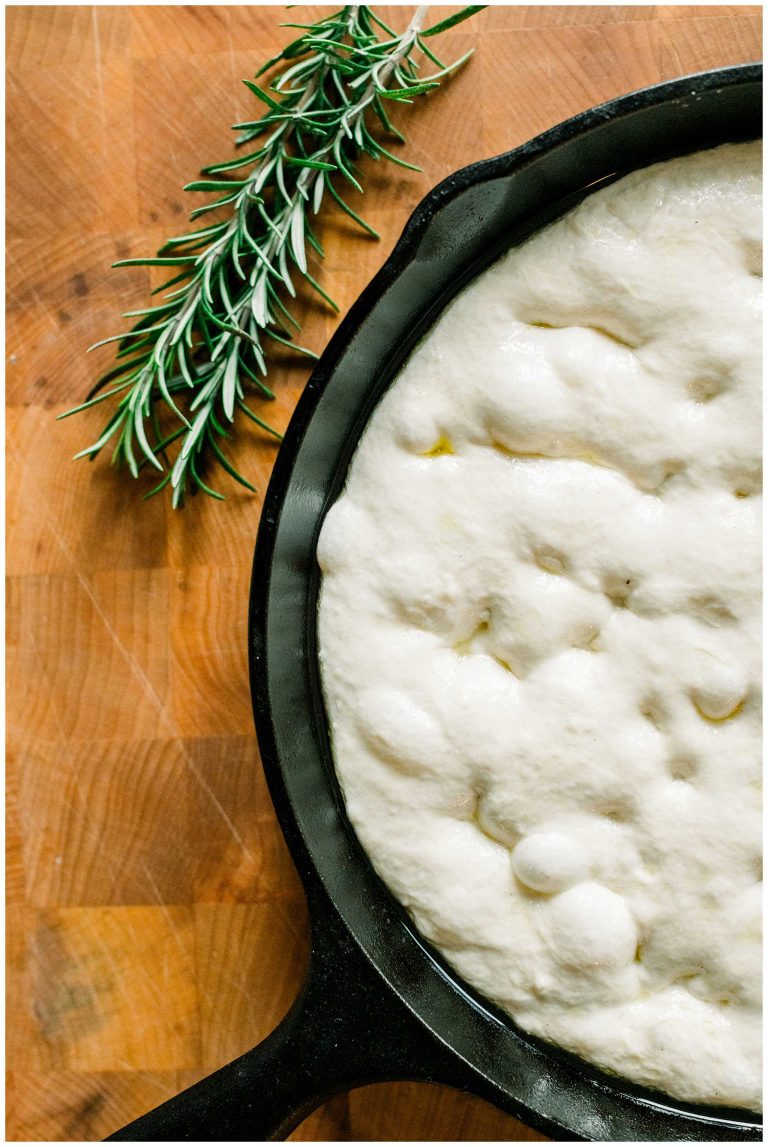
Using soft white wheat will not produce a rise. Just thought I’d share that. Thanks for the recipe!
Hey Nicole! It’s actually the sourdough starter that makes it rise. Hope this helps!